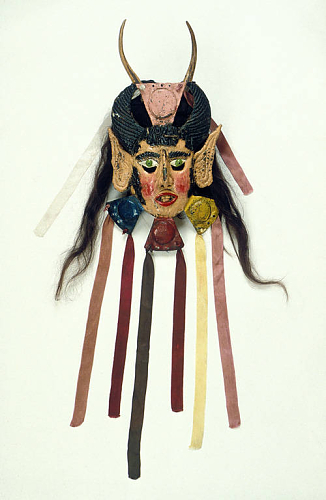Mexican Masks Tell Tales Through Dance
For centuries, cultures around the world have used masks in ritual dances and festivals to represent traditional characters.
This copper mask, found in the Smithsonian’s National Museum of Natural History’s anthropology collections, was made in the state of Guerrero, Mexico. It depicts La Malinche, a character in traditional Mesoamerican dances that represents a woman who is said to have aided the Spanish conquistador Hernán Cortés in his conquest of the Aztec Empire. In traditional dances, La Malinche is represented by a man wearing a mask.
This is one of the hundreds of Mexican masks collected by American artist, puppeteer and pioneer in the collection of Mexican folk art, Donald Cordry (1907–1978). Cordry was passionate about Mexican arts and crafts—he collected items from different regions of Mexico and even established a workshop where he encouraged artists to explore their craft.
The Cordry family donated a large collection of Mexican masks (including this one) to the National Museum of Natural History in the early 1980s. To learn more about the Smithsonian’s anthropology collections and Cordry’s Mexican masks, visit anthropology.si.edu.



